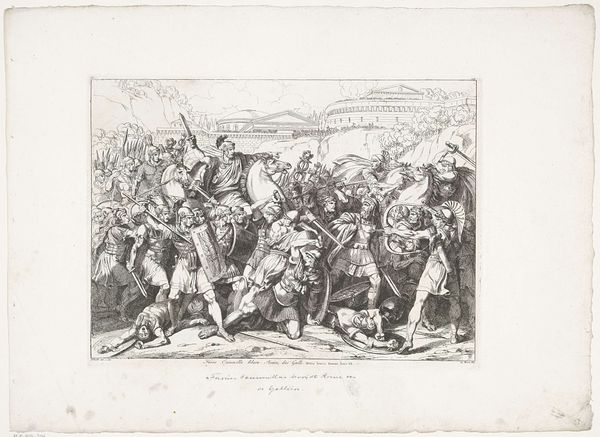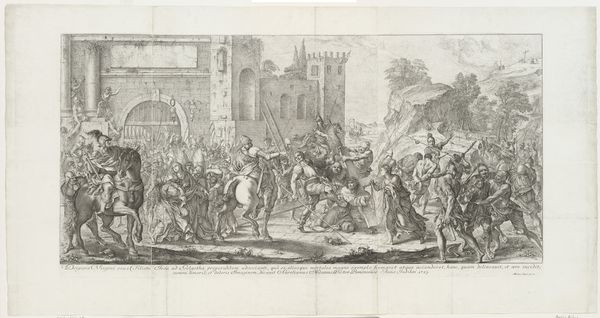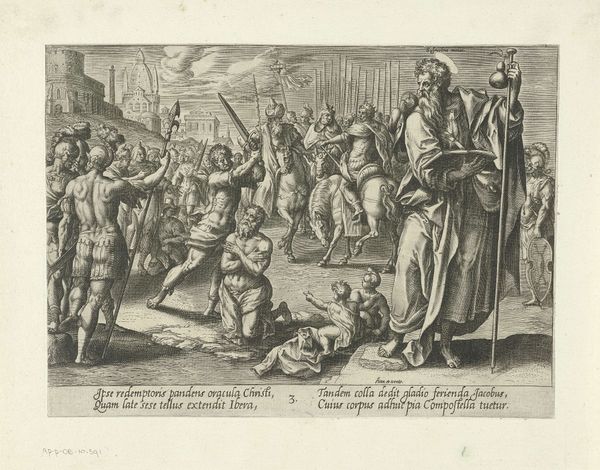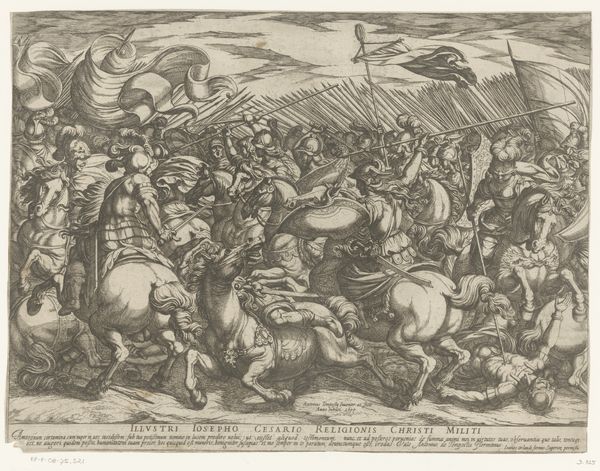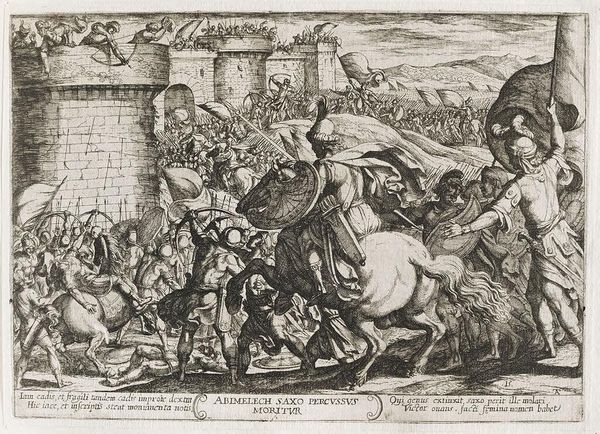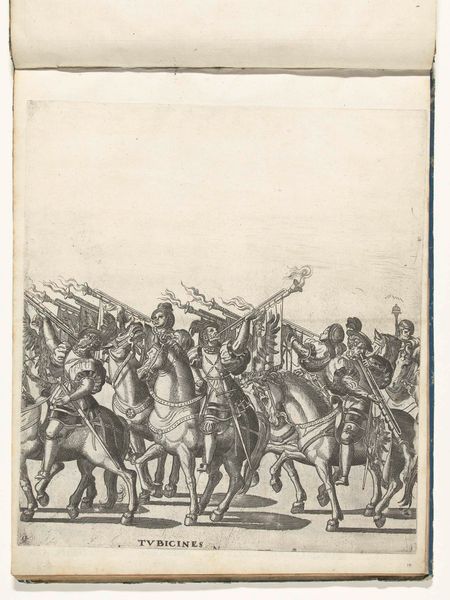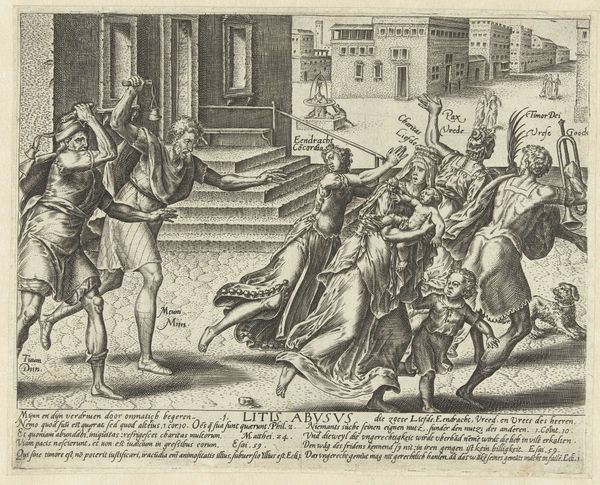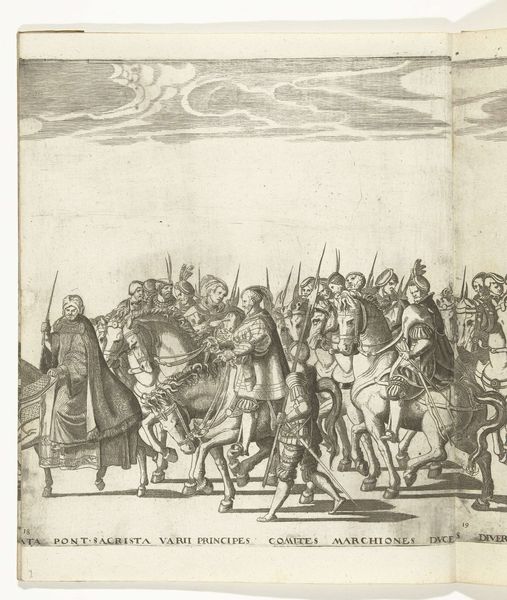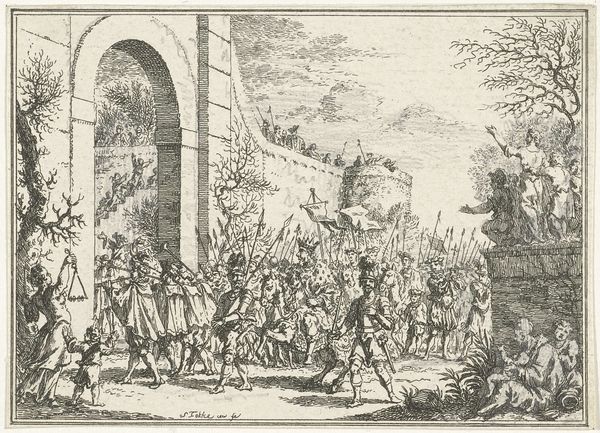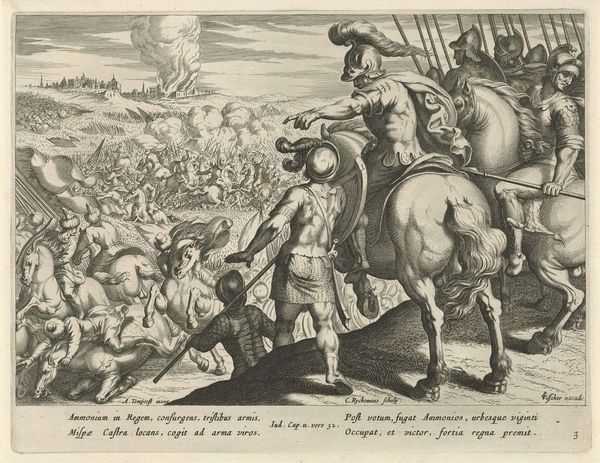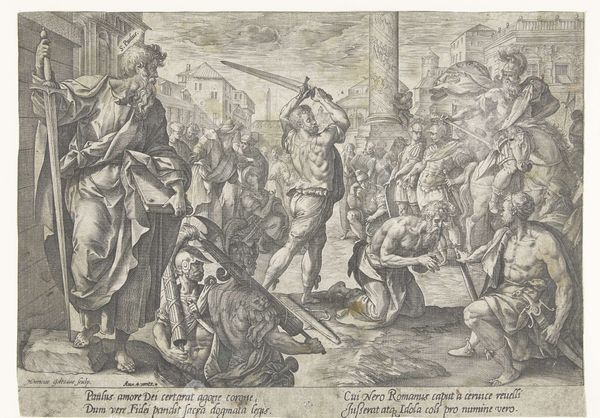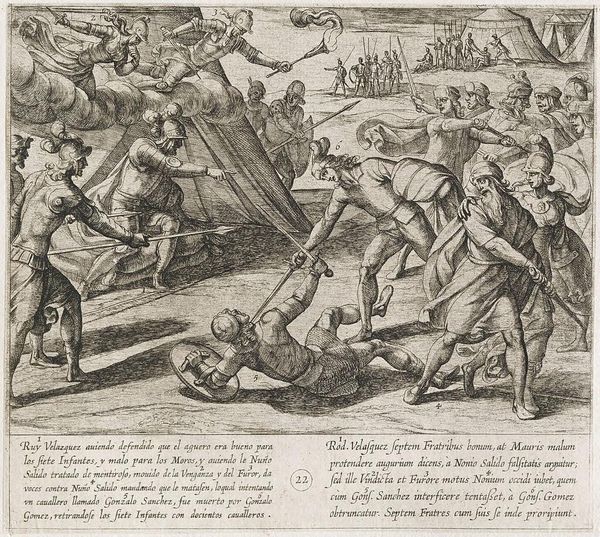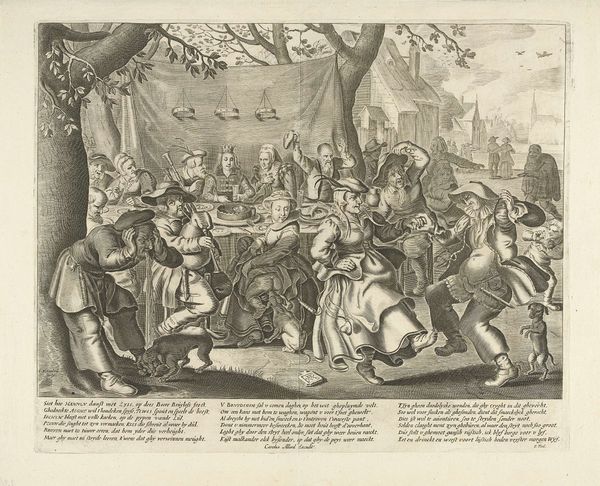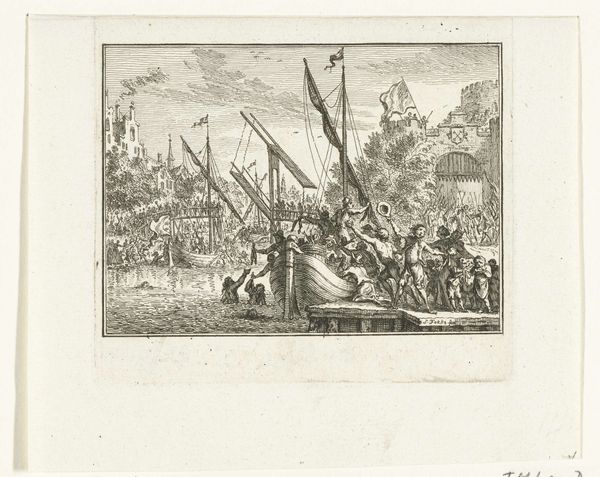
print, etching, ink, engraving
#
narrative-art
#
baroque
# print
#
etching
#
figuration
#
ink
#
history-painting
#
engraving
Dimensions: height 118 mm, width 134 mm
Copyright: Rijks Museum: Open Domain
Editor: We’re looking at "Oproer te Den Haag, 1672," a print made in 1672 by Gaspar Bouttats, currently held in the Rijksmuseum. It depicts a chaotic scene with many figures engaged in what looks like a riot or battle. The line work is incredibly detailed, but it also feels quite busy and a little overwhelming. How do you read the composition of this piece? Curator: The artist uses the structure of linear perspective, note how all is converging. Figures dominate the plane of view, but I observe an intrinsic flattening, achieved through intricate line work across the field of vision, causing some to bleed into others. The materiality is the core consideration: the monochromatic quality of the etching flattens the chaos you mention, almost detaching us, allowing us to evaluate this representation as, essentially, mark-making. Consider the symbolism within those marks—are we to discern an underlying structure despite the turmoil depicted? Editor: That's interesting, the idea of flattening, and an almost intentional detachment. It is difficult to reconcile the material, being black ink on white, with a tumultuous scene. But do you think this detachment reduces our reading of an important event into mere shapes, or is there perhaps some sort of tension? Curator: Indeed, it is this tension, not historical reenactment, which commands our consideration. This tension speaks volumes about representational art. Observe how Bouttats does not so much render as he does translate, through highly self-conscious execution and design, that seeks less to persuade than it does to remind us of the artifice inherent to depiction. What has struck you most? Editor: Thinking about it as translation really helps shift my perspective from the literal narrative to the artistic intent. For me, the way the artist creates rhythm amidst the chaos is truly remarkable. Curator: Precisely, Editor! By carefully analyzing the formal qualities of the work, we gain a far richer appreciation for its underlying complexities and its power as art.
Comments
No comments
Be the first to comment and join the conversation on the ultimate creative platform.
